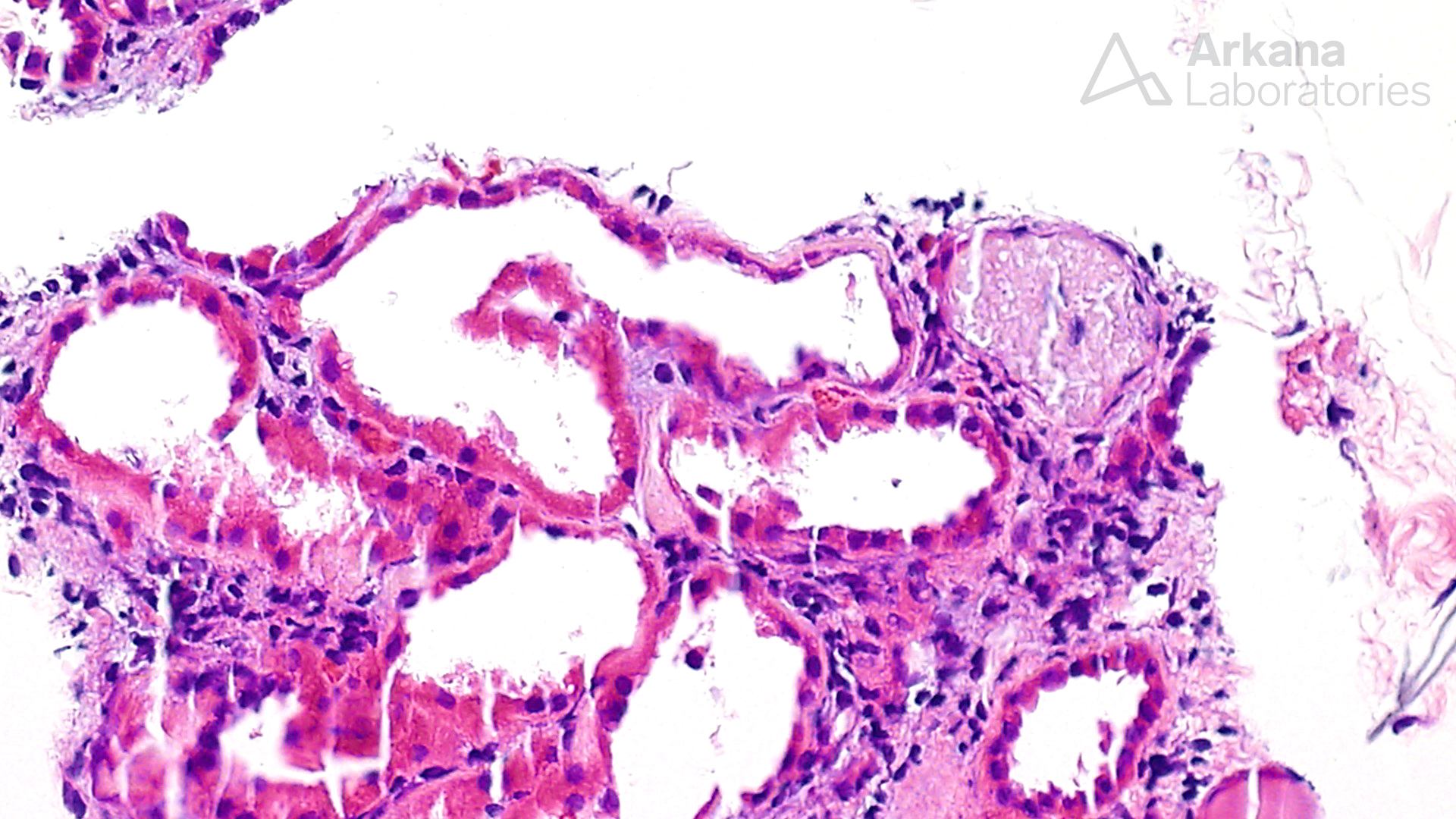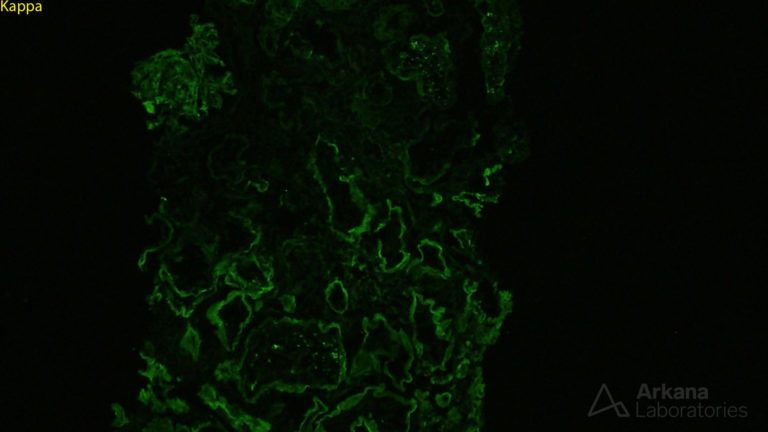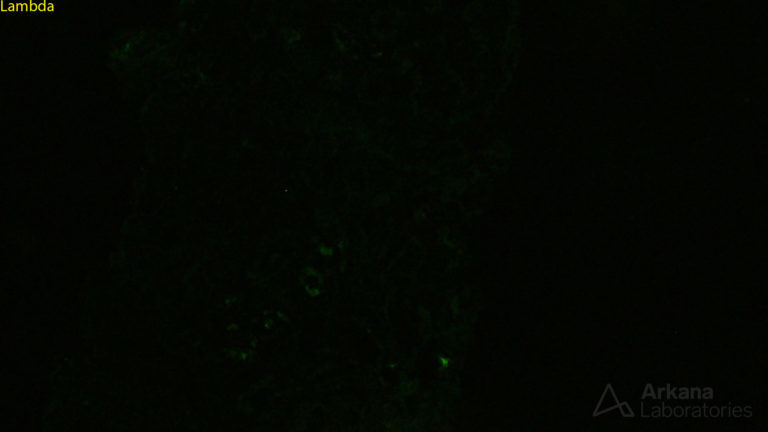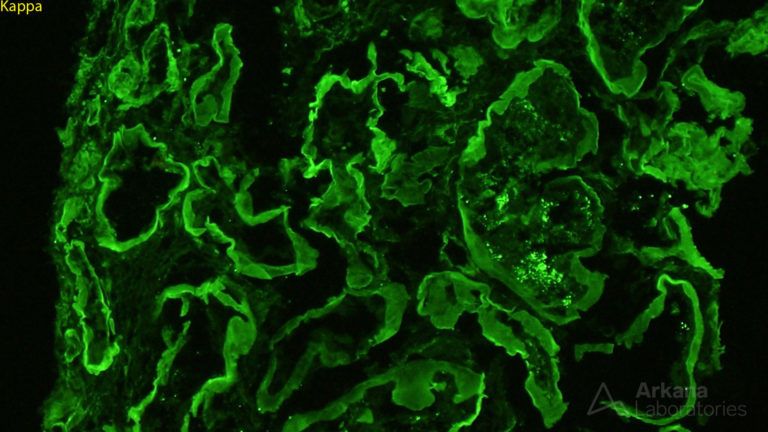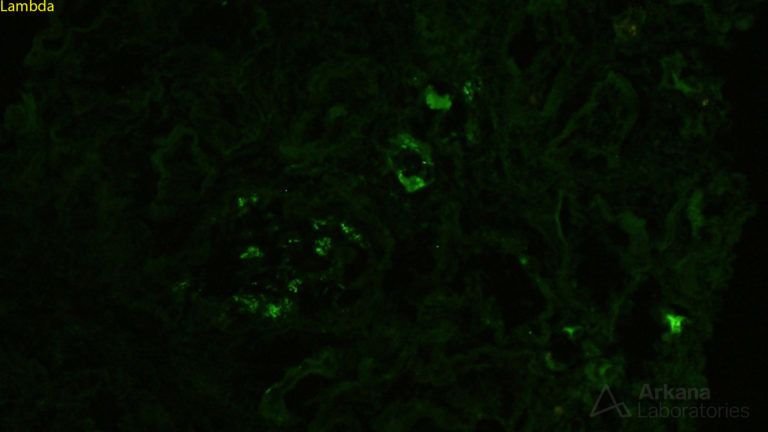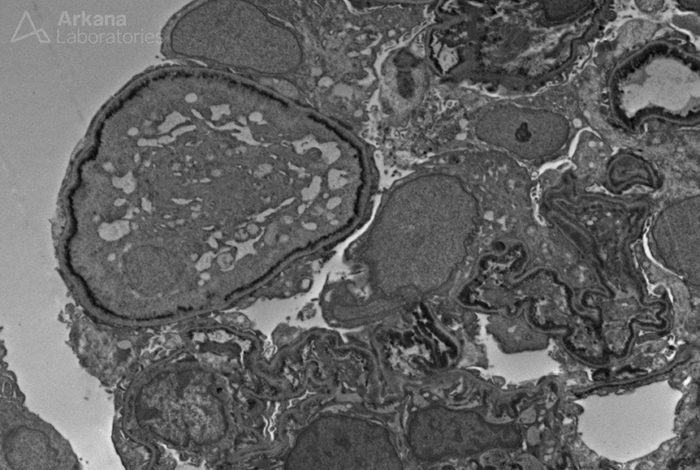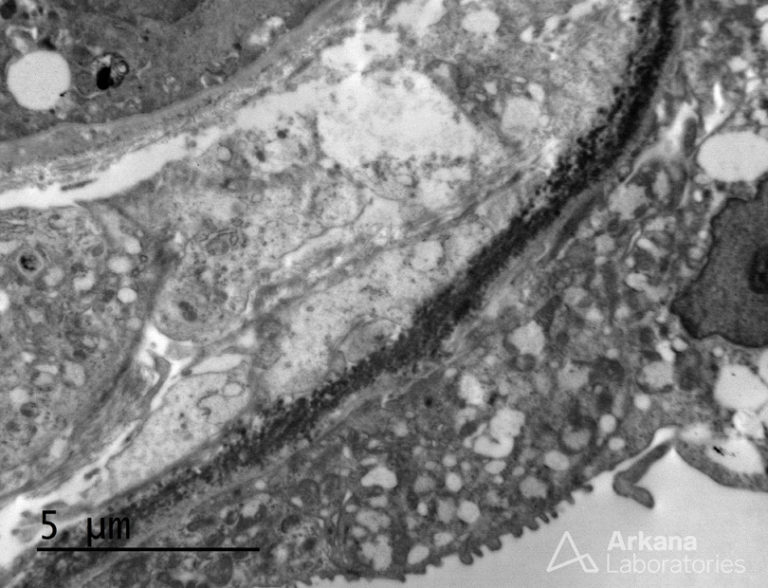An otherwise asymptomatic 65-year-old man presents for medical evaluation after 15 years of not seeing a physician. He was noted to have an abnormal D-dimer test and was referred for further evaluation to the emergency department where his serum creatinine was found to be 5 mg/dL. Urinalysis showed 2+ proteinuria and 3+ blood. A renal biopsy was ordered. The images are characteristic findings of which of the following:
1. Amyloidosis
2. Fibrillary Glomerulopathy
3. Monoclonal immunoglobulin deposition disease
4. Dense Deposit Disease
5. Lupus nephritis
6. Anti-brush border antibody disease
Choice 3 – Monoclonal immunoglobulin deposition disease (MIDD) is characterized by systemic deposition of monoclonal immunoglobulins including light chains, heavy chains or both. Within the kidney, the most common sites of deposition are the tubular and glomerular basement membranes. Typically, immunofluorescence shows deposition of a single light- or heavy-chain along the basement membranes, which by electron microscopy displays electron-density with a granular to powdery texture, which helps to differentiate these from the deposits found in the other answer choices.
In this case, the deposits are kappa light chain restricted, indicative of light chain deposition disease (LCDD). This is usually due to a clonal proliferation of B cells or plasma cells. While most patients with LCDD have an abnormal kappa: lambda free light chain ratio, an M-spike may be detected in 70% of cases, with 15-20% not having a detectable serum or urine paraprotein by immunofixation at the time of diagnosis. Patients present with acute or chronic renal failure with or without proteinuria. Nephrotic range proteinuria is seen in approximately 60% patients. About 40% of patients have a concurrent diagnosis of multiple myeloma. 75% cases of MIDD are light chain restricted (LCDD) as in this case, while ~14% are heavy chain restricted (HCDD) and 11% have both heavy and light chains (LHCDD).
Quick note: This post is to be used for informational purposes only and does not constitute medical or health advice. Each person should consult their own doctor with respect to matters referenced. Arkana Laboratories assumes no liability for actions taken in reliance upon the information contained herein.
